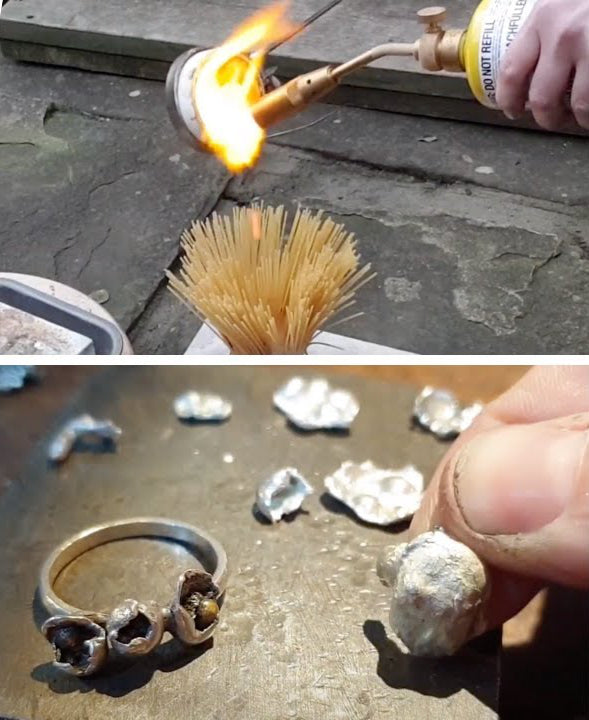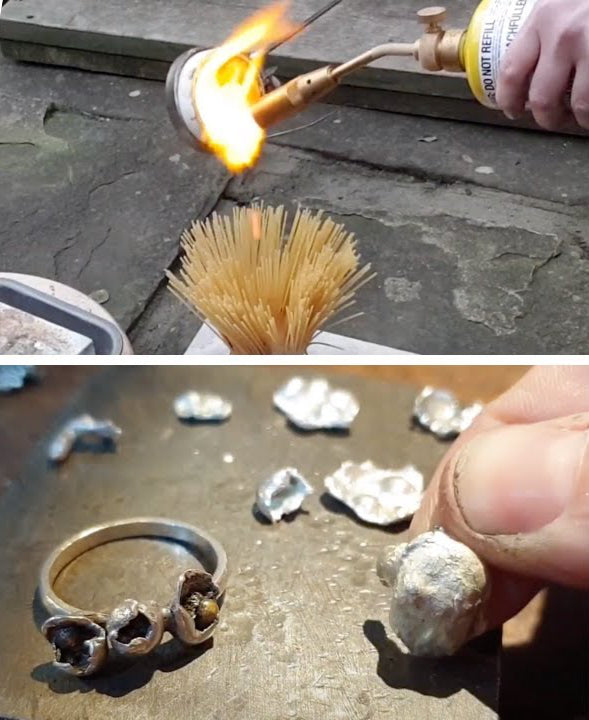Silver is cherished in jewelry for its luster and versatility, especially in sterling forms like S925 silver. However, when silver items are discarded improperly, they can pose significant environmental and health hazards. This article examines the risks associated with silver waste, highlights the importance of responsible recycling, and shows how consumers of S925 gold-plated jewelry can help mitigate silver pollution.
What Happens When Silver Is Discarded Improperly?
Silver in consumer products—including jewelry, electronics, and photographic materials—frequently ends up in landfills or wastewater if not recovered. Once silver-containing waste enters the environment, silver ions and nanoparticles can leach into soil and water.
- Toxicity to Aquatic Life: Silver is toxic to many aquatic organisms. Even low concentrations of ionic silver can adhere to fish gills, impairing respiration and potentially causing mortality.
- Disruption of Microbial Processes: Silver’s antimicrobial properties, beneficial in controlled use, become problematic when released into wastewater systems. Silver can disturb bacterial activity in sewage treatment, reducing treatment efficiency and leading to downstream contamination.
- Accumulation in Ecosystems: Silver does not degrade; it can accumulate in sediments and biomagnify through food chains, posing longer-term ecological risks.
Human Health Risks from Silver Contamination
While ingested or dermal exposure to minute amounts of silver (e.g., trace dietary intake) may not immediately harm, higher or prolonged exposures can lead to adverse effects:
- Argyria (Silver Poisoning): Chronic ingestion or absorption of silver can result in argyria, a condition where silver deposits in skin layers, causing blue-gray discoloration that may be permanent.
- Neurological Concerns: Silver can deposit around nerve tissues; there is evidence suggesting potential neurotoxic effects at high exposures, although typical jewelry exposure is low. Improper industrial or environmental exposures increase risk.
- Antibiotic Resistance Contribution: Free silver ions in the environment can contribute to microbial resistance mechanisms, complicating infection control in healthcare settings.
Major Sources of Discarded Silver from Jewelry
- Broken or Unwanted Jewelry: Consumers often store broken or outdated silver pieces that eventually may be thrown away.
- Industrial and Photographic Waste: Beyond jewelry, silver in electronics, photographic films, and industrial catalysts can end up in general waste streams.
- Electronic Waste (E-Waste): Electronics often contain silver in circuitry; if not recycled, this silver contributes to landfill contamination.
Understanding these sources underscores the importance of collecting and recycling silver across sectors, not just within jewelry.

Environmental Footprint of Silver Mining vs. Recycling
Mining Impact: Extracting virgin silver involves energy-intensive processes, water consumption, and the use of chemicals (e.g., cyanide, mercury in some contexts), causing soil erosion and water pollution
Recycling Benefits: Recovering silver from old jewelry or industrial waste drastically reduces the need for new mining. Recycling silver uses significantly less energy and water, minimizes chemical usage, and curtails greenhouse gas emissions associated with extraction and refining
Resource Conservation: Since silver is finite, recycling preserves stocks for future generations and aligns with circular economy principles

Why S925 Gold-Plated Jewelry Fits into a Responsible Approach
S925 gold-plated jewelry consists of a sterling silver base (92.5% silver) with a durable gold plating. Though underlying silver still has potential waste concerns when discarded, certain practices enhance longevity and reduce waste:
- Enhanced Durability and Tarnish Resistance: The gold plating layer protects the silver core from oxidation and tarnish, extending the piece’s wearable life. Longer-lasting jewelry means fewer items discarded prematurely.
- Timeless Design Encouragement: Designing and marketing S925 gold-plated jewelry as timeless, repairable, and refillable encourages consumers to keep and maintain pieces rather than discard them.
- Recycling-Friendly Base: When plating eventually wears off and the piece reaches end-of-life, the sterling silver core is highly recyclable. Educating customers about returning old jewelry for remelting helps recover silver and repurpose it.
By promoting care tips and recycling options, brands selling S925 gold-plated jewelry can minimize silver waste and its hazards.
Best Practices for Silver Jewelry Recycling
- Collection Programs: Jewelry brands and retailers can offer take-back or trade-in schemes. Collected silver items are aggregated and sent to certified refiners for extraction.
- Local Recycling Facilities: Inform customers about trustworthy local recyclers who handle precious metals responsibly, avoiding informal disposal.
- DIY Pre-Collection: Consumers should avoid throwing silver pieces in household trash. Instead, they can store unwanted silver jewelry until a recycling opportunity arises.
- Partnerships with Refiners: Collaborate with eco-conscious refiners that use advanced, low-impact methods (e.g., hydrometallurgical processes with minimal chemical residue) to recover silver safely
Care and Maintenance to Prolong Jewelry Life
Educating consumers on proper care reduces premature disposal:
- Routine Cleaning: Use mild soap and water; avoid harsh chemicals that damage plating and silver.
- Storage Advice: Keep pieces in anti-tarnish pouches or lined boxes, away from humidity and direct sunlight.
- Replating Services: Offer or recommend professional replating when gold layer wears thin, so the underlying silver remains protected and the piece stays in use.
- Repair Services: Provide or suggest local jewelers who can fix broken clasps or settings, preventing the discard of otherwise functional pieces.
- Seasonal Styling Tips: Encourage styling versatility (layering, mixing metals) so consumers see value in older pieces and retain them longer.
This approach aligns with sustainable consumption and reduces the volume of silver entering waste streams.
Regulatory and Health Guidelines on Silver Waste
- Hazardous Waste Classification: In many jurisdictions, silver-containing waste (e.g., photographic fixer solutions, plating baths) is classified as hazardous due to aquatic toxicity and potential human health risks. Proper disposal per local regulations is mandatory.
- Industrial Compliance: Jewelry manufacturers must handle plating baths, polish residues, and cleaning solutions containing silver in compliance with environmental standards to prevent silver discharge into wastewater.
- Consumer Awareness: Educate customers about the hazards of rinsing silver-cleaning solutions down drains; recommend designated drop-off or collection points.
Discarded silver poses clear environmental and health hazards if mishandled, from aquatic toxicity to long-term ecosystem accumulation. For brands and consumers in the jewelry sector—particularly those dealing with sterling silver or S925 gold-plated pieces—embracing proper recycling, care, and return programs is essential. By educating customers, integrating sustainable practices, and designing durable gold-plated jewelry with repair and replating in mind, we can reduce silver waste, mitigate its hazards, and support a more circular, eco-conscious jewelry industry.



